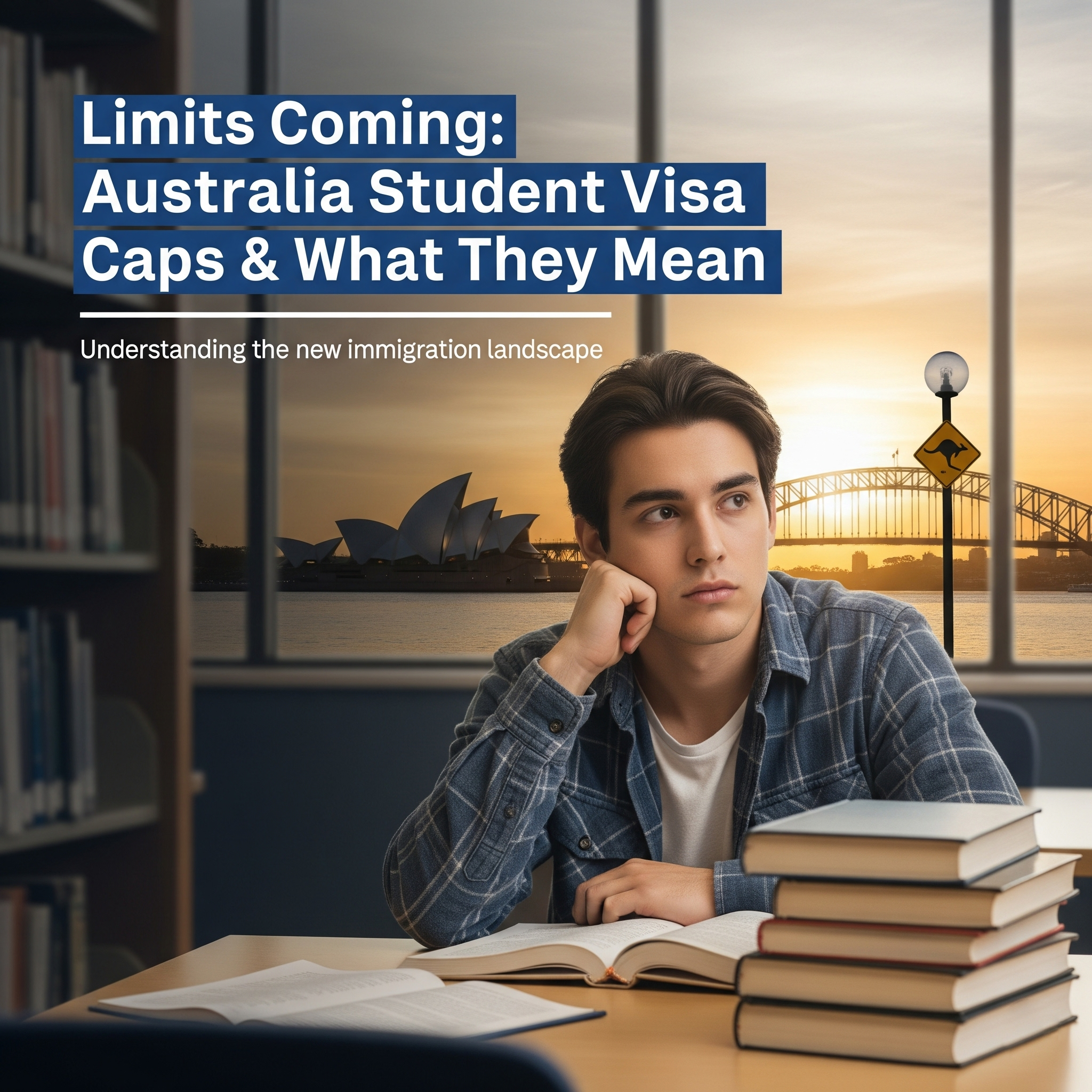Understand Australia’s student visa cap 2025 update—how it affects applicants, universities, and international education policy. Get key info and answers here.
Introduction
With Australia welcoming over 824,000 international students in 2024, sweeping new policies are set to change the landscape for future applicants. The government’s introduction of a student visa cap for 2025 has sparked debate across the education sector and beyond. If you plan to study or work in international education Australia, knowing what these limits mean and how they work is crucial.
Student Visa Caps: What’s Changing in 2025?
The Australian government has enacted the first-ever national student visa limit Australia-wide, starting in 2025. This move aims to balance population growth, housing shortages, and integrity in the education visa policy Australia follows. Here’s what’s new and what it means for you:
-
Visa Cap Announcement: From July 2025, the government introduced a maximum number of new student visas to be issued annually. This number is set each year and reviewed in response to economic and social pressures.
-
Caps by Provider: Individual education providers—universities, TAFEs, and private colleges—are allocated specific quotas. Institutions must manage their enrolments to remain within these limits.
-
Tighter Oversight: Providers not meeting quality benchmarks or with high visa rejection rates may see their caps reduced.
-
Temporary Student Visa Pauses: During high demand or when limits are reached, some providers may need to pause issuing new Confirmation of Enrolment (CoE) letters.
-
Impact Scope: The policy affects applicants both offshore and onshore, including those seeking visas for English study, vocational training, undergraduate, and postgraduate courses.
The overarching goal is to sustain the quality and reputation of international education Australia offers, while preventing overstretched resources in major cities.
Why Has Australia Imposed Student Visa Limits?
Australia’s new education visa policy is a response to multiple, urgent pressures:
-
Urban Housing Shortage: Australia’s migration surge fueled high demand for rental properties. Student visa limits are intended to ease pressure on housing markets in cities like Sydney and Melbourne.
-
Maintaining Educational Quality: Concerns grew over some providers enrolling large numbers of students without adequate support or facilities.
-
Protecting Integrity: Policymakers saw the need to prevent abuse of the international student system for migration rather than genuine study. Tighter caps, combined with the new Genuine Student requirement, help ensure students come for education first.
-
Balancing Economic Needs: While international education is worth over AUD 40 billion annually to the Australian economy, the government is calibrating growth to sustainable levels.
For institutions and students, the Australia student visa cap 2025 means more scrutiny, but also greater confidence in course quality and service.
Navigating the New Student Visa Cap: Practical Strategies
Despite new limits, international education Australia remains competitive. Here’s how students and providers can adapt:
For Prospective Students
-
Apply Early: Submit your university course and visa applications as soon as possible. Spots may fill quickly, especially for popular degrees and locations.
-
Have a Backup Plan: Consider secondary providers or regional campuses, where quotas may be less competitive than in capital cities.
-
Strengthen Your Application: The Genuine Student requirement has become central—clarify your academic goals, study plan, and ties to your home country.
-
Prepare Comprehensive Documentation: Ensure your financial, academic, and English language evidence is complete and consistent. Errors could put you at the back of the queue.
-
Seek Expert Guidance: Consult reputable education agents or university advisors to better understand your options and deadlines.
For Education Providers
-
Monitor Allocations: Track your allocated student visa limit Australia-wide and adjust marketing and admissions accordingly.
-
Focus on Quality and Compliance: High visa approval rates and strong support services could help preserve or increase your cap.
-
Diversify Recruitment: Look beyond traditional markets and expand regional campus offerings to manage demand and support communities.
-
Enhance Student Support: Institutions will need to invest more in housing, pastoral care, and academic services to remain attractive within limited numbers.
Conclusion
Australia’s student visa cap 2025 signals a new chapter in education visa policy Australia strives to implement. While competition for places will increase, these changes aim to maintain the value and integrity of international education Australia is known for. With smart preparation and clear goals, prospective students and providers can still thrive in a changing landscape.
Frequently Asked Questions (FAQ)
1. How will the student visa cap affect international students?
It may make entry into popular courses and universities more competitive, requiring earlier and stronger applications.
2. Are the visa caps permanent or temporary?
They will be set annually and may be adjusted based on migration numbers, housing, and economic conditions.
3. Will all education providers be affected equally by the new caps?
No, caps will vary depending on provider type, course level, and previous compliance records.
4. Can students still apply to multiple providers if their top choice reaches its cap?
Yes, it’s possible to apply to other institutions, but spots may fill quickly across the sector.
5. Does the cap change the student visa requirements?
Core requirements such as financial capacity, English proficiency, and the Genuine Student test still apply—the cap is an added limitation on numbers.


